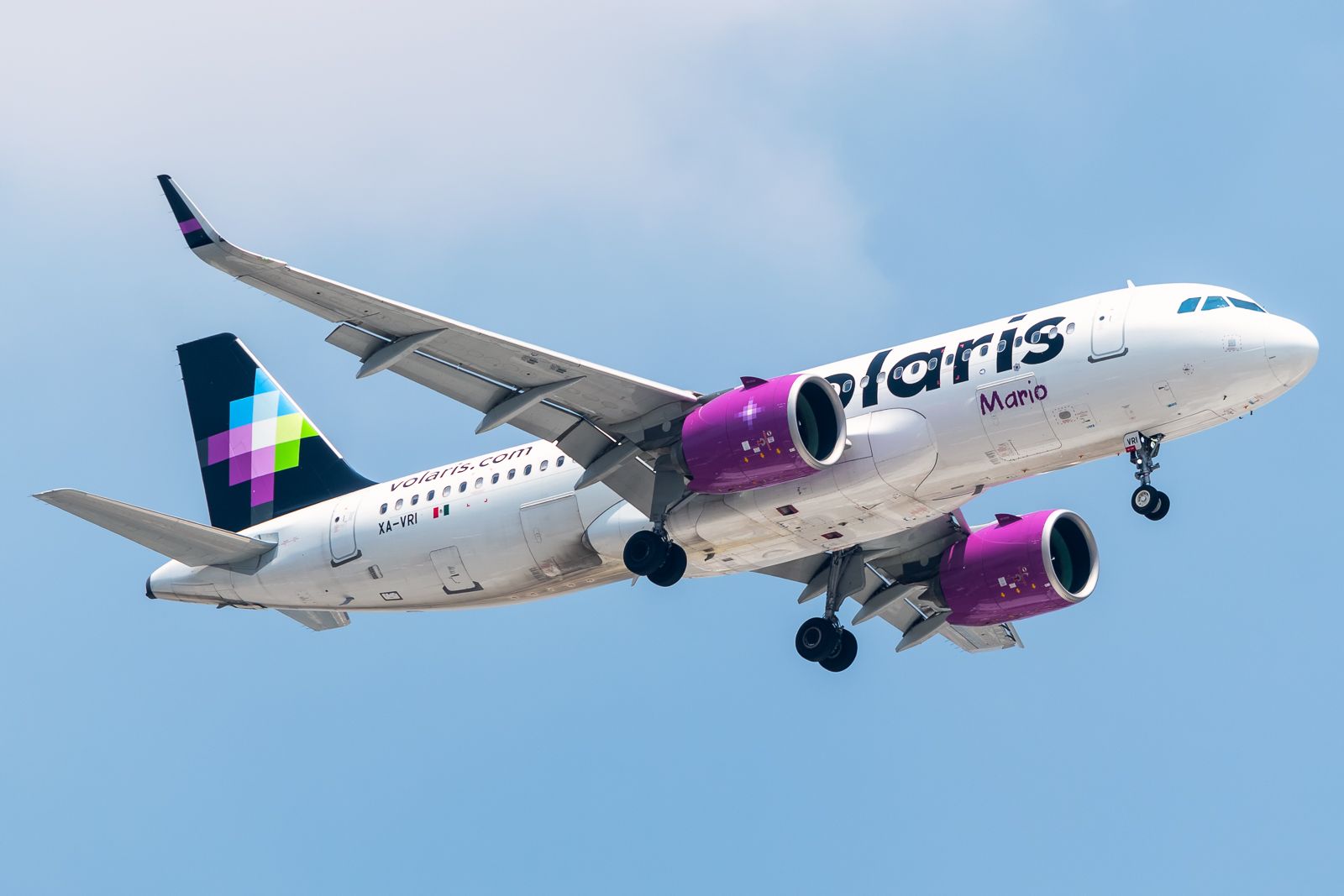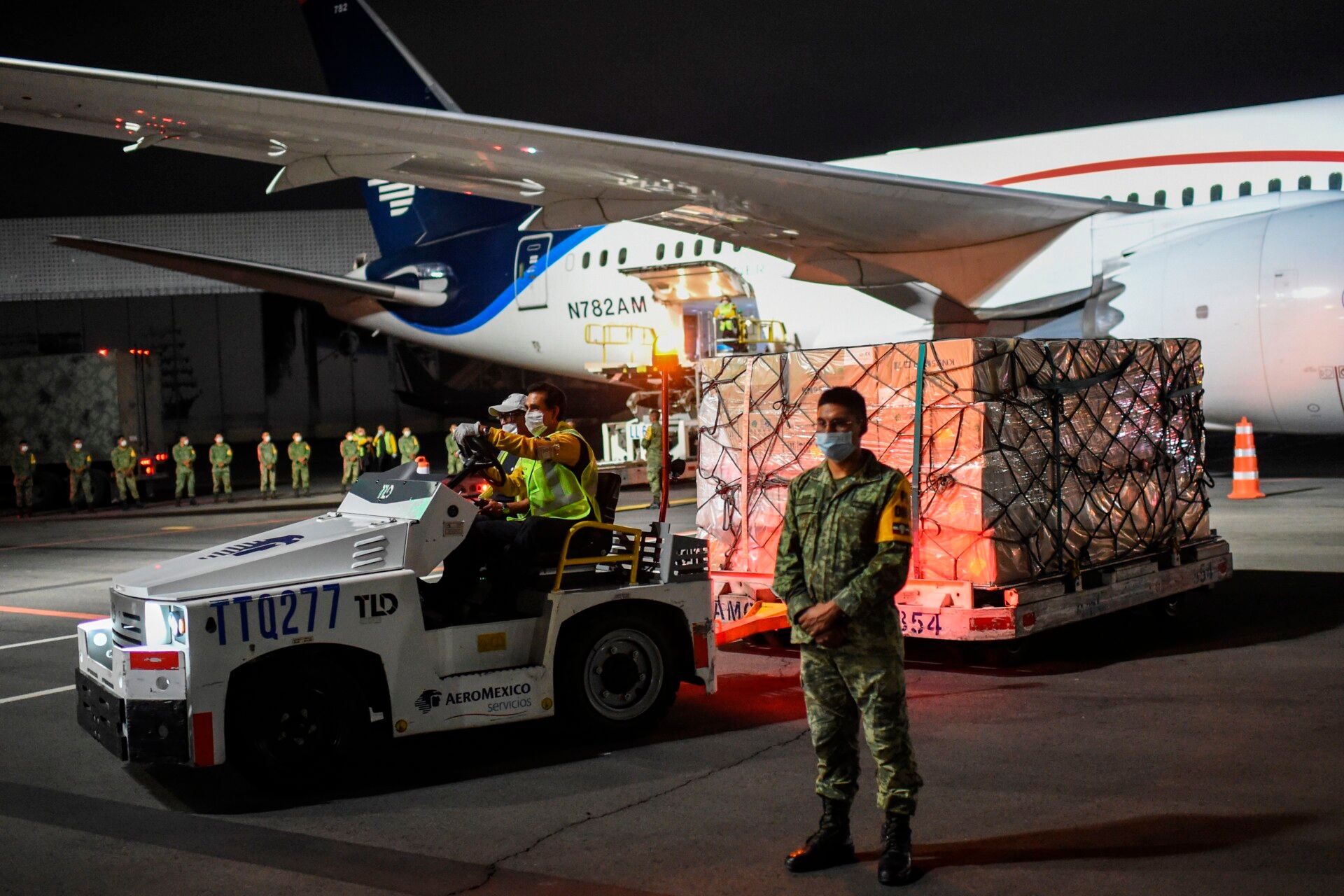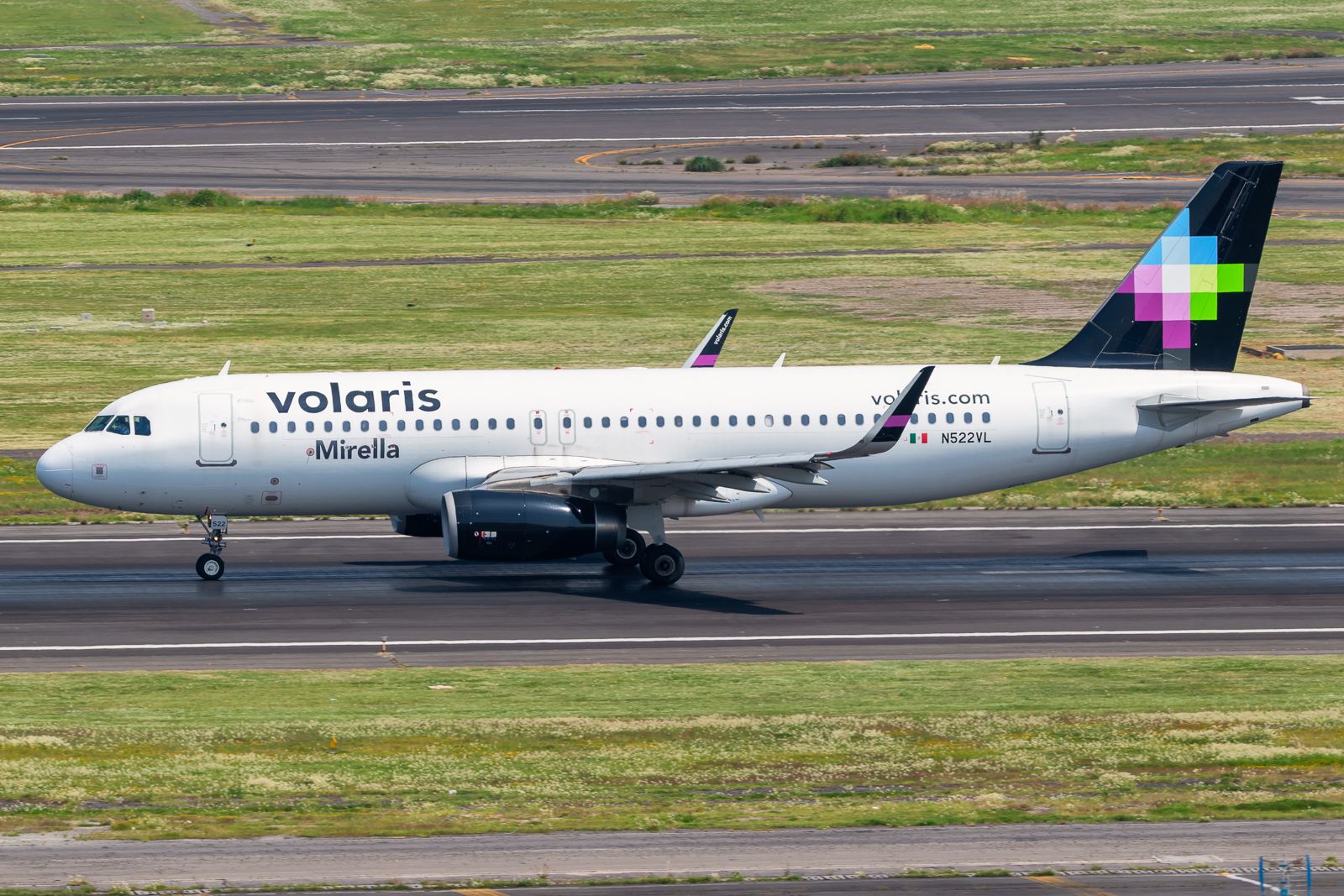On Saturday, an Airbus A320neo from Volaris had to abort a landing at runway 05L in Mexico City Benito Juárez International (MEX) to avoid colliding with another Volaris aircraft already on the same runway with clearance to take off. Following this incident, the head of Mexico’s air navigation service provider (Seneam) resigned, and there have even been calls to stop the commercial service at Mexico’s new Felipe Ángeles International Aiport (NLU) until the government can guarantee safe operations in the city’s airspace. Let’s investigate further.
What happened?
The incident took place late at night on Saturday, May 7. A Volaris A320neo, registration XA-VRV, was operating a commercial service between Mazatlan and Mexico City.
While approaching Mexico City International Airport, the crew requested to land on runway 05L. The air traffic controller in Mexico approved the request and cleared the aircraft to land.
Nonetheless, another aircraft, An Airbus A320neo, registration N545VL operating for Volaris Costa Rica the flight Mexico City-Guatemala-San José, was already on the same runway, waiting to depart.
At the last second, the crew onboard XA-VRV canceled its landing and did a go-around, avoiding a possible disaster. The incident went viral after it was filmed by another crew and posted on social media.
Volaris’ CEO, Enrique Beltranena, addressed the incident by releasing the following statement,
“Thanks to the training of our pilots and their impeccable following of processes, no passenger or crew member was at risk during the situation reported at MEX on the night of May 7. Teams, crews, and alert systems train daily to face similar situations that do not depend on airlines, which can happen in aviation. Following the protocols, I immediately requested an investigation by our Operational Safety area and the aeronautical authorities. At Volaris, we always operate with strict adherence to procedures and with safety as a priority.”
Here's the video of the incident.
A cascade of news after the incident
After the incident took place and went viral on social media, there have been many developments. The Mexican Infrastructure, Communications, and Transportation Secretariat (SICT) has launched an investigation of the incident.
Additionally, it had a meeting with several airline industry members, including the International Air Transport Association (IATA) and the International Federation of Air Line Pilots’ Associations (IFALPA). Last week, IFALPA released a safety bulletin noting its concerns around several incidents involving aircraft arriving at MEX.
Recently the Mexican authorities launched a reconfiguration of the airspace around Mexico City, allowing the entry into service of the new Felipe Ángeles International Airport.
According to IFALPA,
“It would appear that with the opening of this newly converted airport, ATC has apparently received little training and support as to how to operate this new configuration in the airspace.”
Additionally, the head of the country’s air navigation service provider, Víctor Manuel Hernández Sandoval, resigned on Sunday following the incident.
On Monday, Mexico’s Communications and Transport Commission sent a letter to the SICT requesting the immediate shut-down of the Felipe Ángeles International Airport until the safety of the passengers can be guaranteed.
On Tuesday, the Mexican president, Andrés Manuel López Obrador, said there’s no problem with the redesign of the airspace.
The incident has quickly become political. Photo: Guillermo Quiroz Martínez via @gquimar.
A comment on the incident
Like much news in Mexico, the near-collision quickly became a political event in Mexico. Nonetheless, this was, above all, an incident that fortunately did not escalate thanks to the many safety layers commercial aviation has nowadays.
Despite claims from the political sphere, this incident was not directly related to Mexico City’s airspace reconfiguration, nor to the newly inaugurated airport. It was an incident. It does show the ever-present human factor, which can lead to disaster.
It also shows there is much room for improvement within the Mexican civil aviation authorities, and particularly within the air navigation service provider, which has to be addressed quickly if Mexico wants to regain its Category 1 status with the Federal Aviation Administration (FAA).
In the end, we will have to wait until the Mexican authorities release their investigation of the incident to learn more about it.
What do you think about this incident? Let us know in the comments below.



